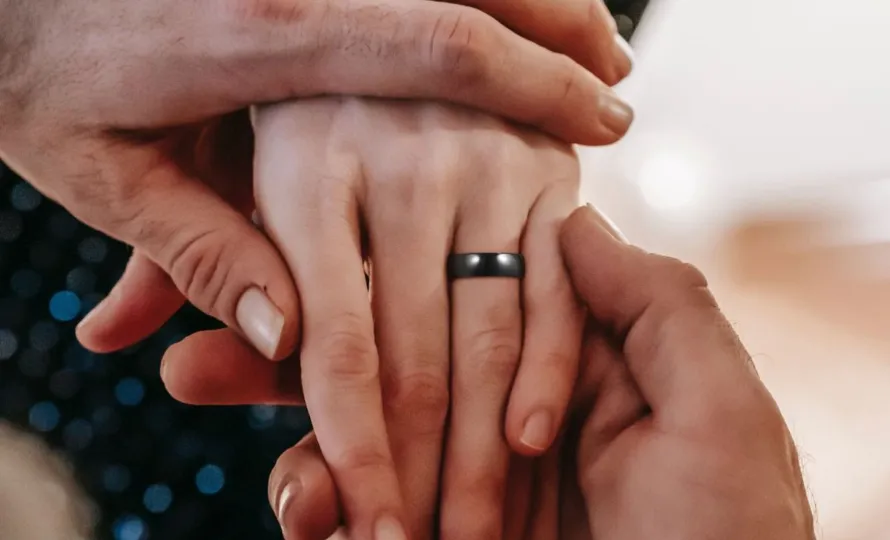Glancing at a married couple’s hands, you’ll often notice the gleam of wedding rings—that universal symbol of love and lifelong commitment. But while many brides sport diamond-studded bands, groom’s rings carry a more complex history.
When did men first start exchanging rings to commemorate marriage? How has the meaning of the male wedding ring evolved?
Here’s a deep dive into the fascinating story behind men’s wedding rings and their journey from ancient ritual to modern tradition.
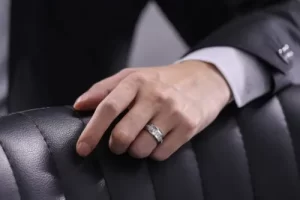
Ancient Civilizations Lay the Early Foundations
- The roots of exchanging wedding rings trace back nearly 5,000 years to ancient Egypt around 3,000 BC. Egyptian rings were simply made of natural materials like reeds or leather.
- These bands weren’t worn daily but were used in betrothal ceremonies and weddings to signify the union. They represented a circular perfection with no beginning or end.
- Ancient Romans expanded the symbolism of rings to denote social status and commitment. Iron betrothal rings embodied strength and permanence. Elite gems-encrusted bands carried connotations of luxury and importance.
So, while ancient civilizations planted early seeds, jewelry needed more extensive cultural meaning and daily significance. The wedding ring was more a ceremonial artifact than a worn emblem of love.
Ancient Egyptian wedding rings were simple bands made of natural materials rather than precious metals and gems. But they pioneered key symbolism of the circular band representing eternal perfection.
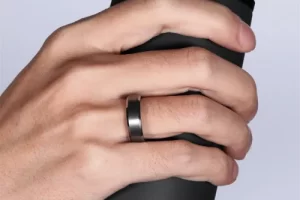
The Middle Ages Mark a Transition
By medieval times, the wedding ring evolved into a more familiar precious keepsake:
- Both men and women in the Middle Ages wore metal rings, typically gold or silver, to represent their marital union.
- These bands were often customized with spiritual symbols or romantic phrases.
- However, in the medieval era it remained more common for wives to wear the bands daily while husbands displayed them selectively.
So the late Middle Ages saw the wedding ring transform into a cherished, holy emblem with deeper personal meaning. Still, wearing it was not yet an ingrained aspect of masculine identity.
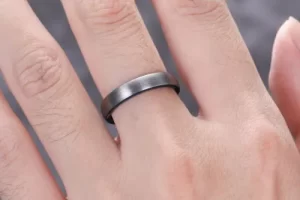
The World Wars Solidify Emotional Significance
While casual jewelry use for men faced stigma in the early 20th century, global war fueled a shift:
- Wedding rings offered emotional support as soldiers fought overseas in WW1 and WW2. The band reminded men of the wives and families awaiting their return.
- Soldiers popularized and normalized the men’s wedding ring across social classes by participating in this tradition.
- After soldiers returned home, the new sentimentality helped shrug off the view that jewelry contrasted with masculinity.
Gender Roles Reshape the Symbol’s Meaning
By late modern times, the male wedding ring underwent another key shift:
- As gender norms and marital relationships modernized in the 60s and 70s, men increasingly embraced public displays of affection and lifelong commitment.
- Pop culture depictions, celebrity endorsements, and evolving attitudes destigmatized the men’s wedding band and recast it as a positive symbol.
- Instead of a showy ornament, it became an outward symbol of inner emotional depth and maturity.
In many ways, men adopting the wedding ring marked a culture entering a new phase of gender equality and shared marital values.
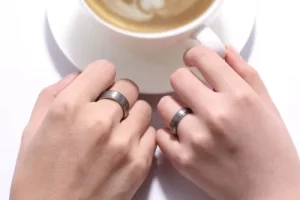
Contemporary Couples Personalize & Diversify
Today, the symbolism and styling of men’s wedding rings see almost infinite personal expression:
- Band materials have diversified from classic yellow gold to modern tungsten and ceramic.
- Engravings allow symbolic customization; side gems provide stylistic flair.
- Same-sex and gender-fluid couples now access traditions once bisected by gender.
- The cultural repertoire for expressing lasting love through a band has radically grown.
While still acknowledging traditional meaning, modern couples personalize rings to embody their unique commitments.
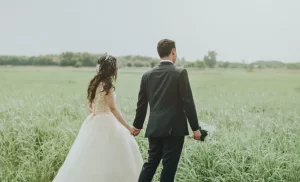
The Enduring Symbol Spans Millennia
The history of men’s wedding rings traverses vast cultural shifts across five millennia:
- Ancient World:Ceremonial objects activate ritual meaning
- Middle Ages:Precious bands signify spiritual & romantic bonds
- World Wars I & II:Emotional solidarity supports nationalism
- Late Modern Era:Gender roles reshape marital traditions
- Today:Radical personalization expands symbolic expression
From reeds to platinum, what endures is the unique distillation of love, identity, memory, and values crystallized in this circular band—inscribing it with intimate meaning as it encircles a couple’s lifelong journey together.
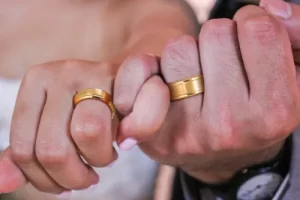
The Enduring Legacy of Symbolic Meaning
The history of the men’s wedding ring is long and storied, spanning cultures and generations. While styles and meanings have evolved with the tides of fashion and society, the essence of symbolizing love and unity remains unchanged. The simple metal band retains powerful emotion and memory from ancient ritual artifacts to modern expressions of commitment.
Even as couples increasingly personalize their form, the wedding ring persists as sincere shorthand, conveying the profound inner world of relationships in a single circle without end.
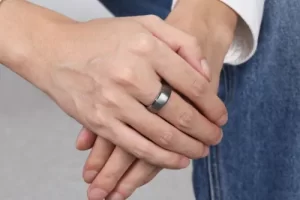
FAQs About Men’s Wedding Rings
1. When did men start commonly wearing wedding rings?
While the ritual of exchanging rings dates back thousands of years, men wearing wedding bands daily and prominently only became common around World War I and II.
2. Why didn’t men historically wear them?
Casual jewelry and ornamentation carried effeminate stigma for men across certain eras. Rings symbolized social and marital status for ancient nobles and kings, however.
3. When did metals like tungsten gain popularity?
As gender norms eased in the 60s and 70s, men increasingly personalized rings. Contemporary, durable metals emerged in the 1990s and 2000s as popular options.
4. What finger is the band worn on?
In most Western countries, men and women wear the wedding ring on the left-hand ring finger. The exception is parts of Europe where the right hand is traditional.
5. How can modern grooms add personal flair?
Engravings inside the band carry secret meanings. Stylistic metal mixes, gems adding color, patterned detailing, and unique finishes allow personal expression aligned with the wearer’s identity.

